A History of Music - Part II (1708 - 1765)
Ongoing tracker of each composition, song, album or other piece of music that I review/listen to for this project. This part consists of the later Baroque era and part of the Classical era. |
| 1 | 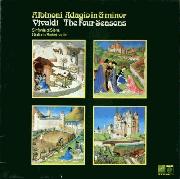 | Tomaso Albinoni
Adagio in G minor
c. 1708
A beautiful piece regardless of its questionable origins - if not Baroque in creation, it's certainly Baroque in spirit. |
| 2 |  | Johann Sebastian Bach
Toccata No.4 in D minor, BWV 913
1708
Third movement is the most interesting here, very spacey and playing with some interesting harmonic choices. |
| 3 |  | Antonio Vivaldi
Twelve Violin Sonatas, Op. 2
1709
A predecessor to Vivaldi's truly great later works - violin + basso continuo accompaniment, per usual, but you can hear his sense of melody coming through early. Highlights are the first three, no. 8 and no. 11. |
| 4 |  | Johann Sebastian Bach
Passacaglia and Fugue in C minor, BWV 582
1710
Probably Bach's most famous passacaglia (which is, if you don't know, a set of triple-meter keyboard variations pioneered in Spain and elaborated on by Frescobaldi). As with most variation-based compositions, the piece is a steady build-up, but where this work stands out is in how the variations are deployed, as well as in how Bach drops little nods to German Lutheran hymns in the process (very typical of his writing). |
| 5 |  | Johann Sebastian Bach
Toccata No.3 in D major, BWV 912
1710
A slower toccata that doesn't offer much of special interest given his other works. |
| 6 |  | Johann Sebastian Bach
Toccata No.5 in E minor, BWV 914
1710
Short but sweet toccata, very energetic if questionably-paced (fourth movement is almost as long as the previous three combined). |
| 7 | 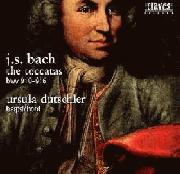 | Johann Sebastian Bach
Toccata No. 6 in G minor, BWV 915
1710
An extended final movement is the highlight of this early Bach toccata, prime for virtuosic improvisation. |
| 8 |  | Antonio Vivaldi
L'estro armonico, Op.3
1711
This collection of 12 violin concertos was described by one scholar as the most important instrumental work of the entire eighteenth century. It's hard to disagree, even if it may not be Vivaldi's creative high point. The melodies, as is typical with his work, fly off the page here - no. 5 was the most popular of the era for its speedy virtuosity, no. 6 the most popular today due to its focus on high-register melodies. |
| 9 | 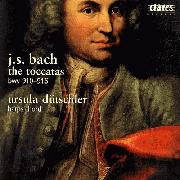 | Johann Sebastian Bach
Toccata No.1 in F-sharp minor, BWV 910
1712
This early Bach toccata is one of his quickest-paced, spme difficult hand patterns and intriguing harmonic choices being played in a relatively unusual key signature for him. |
| 10 |  | Johann Sebastian Bach
Toccata, Adagio and Fugue in C major, BWV 564
1712
A little bit more drawn-out and much less abrasive than BWV 565, but its meandering nature is kind of nice because it allows Bach to play with space in his arrangements a bit. Not to be slept on. |
| 11 |  | Johann Sebastian Bach
Organ Concerto in G, BWV 592
1713
Nice first organ concerto, albeit a bit restrained compared to his other works for the same instrument. |
| 12 |  | Johann Sebastian Bach
Aria variata in A minor, BWV 989
1714
Nice theme and variations for keyboard, often paired with the Goldberg Variations despite not being at all from the same era of his career. |
| 13 |  | Johann Sebastian Bach
Organ Concerto in D minor, BWV 596
1714
More advanced than the previous year's concerto, powerful intro and some nice harmonic ideas in the piece's final movement. |
| 14 |  | Johann Sebastian Bach
Toccata No.2 in C minor, BWV 911
1714
Somewhat more pedestrian compared to the other stuff he was writing at the time, but an interesting final movement makes up for that somewhat. |
| 15 | 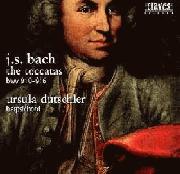 | Johann Sebastian Bach
Toccata No.7 in G major, BWV 916
1714
As Bach works go, this one positively lumbers along, and I don't mean that in an especially kind way. Perhaps the weakest of this earliest set of toccatas. |
| 16 | 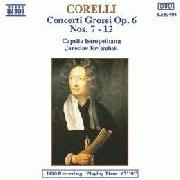 | Arcangelo Corelli
12 Concerti Grossi, Op.6
1714
The G minor "Christmas" concerto is the highlight here, as most anyone who knows Corelli's works will tell you, but the rest of it makes substantial and excellent use of the full string ensemble, while the music itself contains a sense of direction that most composed works of the day did not possess. |
| 17 | 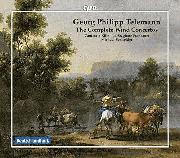 | Georg Philipp Telemann
Concerto for 2 Horns in D major, TWV 52:D2
1714
A lively early example of a horn concerto. |
| 18 | 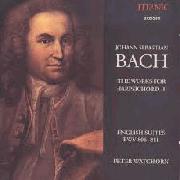 | Johann Sebastian Bach
6 English Suites, BWV 806-811
1715
Being honest: this is a bit of an odd collection, much more French than it is English in terms of style. Having said that, it's an important work for his development as a keyboard composer specifically, and thus is worth seeking out over some of his other works from the period. |
| 19 |  | Antonio Vivaldi
La stravaganza, Op.4
1716
A quirky set of concertos dedicated to one of Vivaldi's old violin students, we're again seeing progression in the technicality of the writing and what the composer is asking of the musicians. Recommended. |
| 20 |  | Johann Sebastian Bach
Lute Suite in E minor, BWV 996
1717
An odd little piece likely written for a lute-harpsichord rather than a lute, and it shows in the writing - it sounds much more like a lute playing a keyboard piece than something written explicitly for the lute itself. |
| 21 | 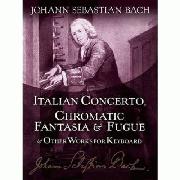 | Johann Sebastian Bach
Prelude and Fugue in A minor, BWV 543
1717
The fugue part is an absolutely superb bit of build-up, one of his best. |
| 22 | 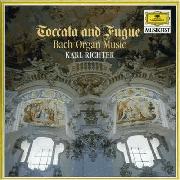 | Johann Sebastian Bach
Toccata/Fugue in Dmin
1717
Perhaps the least interesting toccata/fugue pairing, and by leaps and bounds not as compelling as the other D minor composition. The fugue still has some nice ideas with the voicings and how the theme works its way back into the flow, however. |
| 23 | 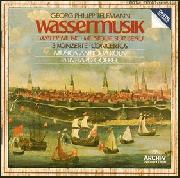 | George Frideric Handel
Wassermusik, Suite nr. 1 in F-dur, HWV 348
17 July 1717
Movement III may be the highlight of the entire Wassermusik series, a standalone piece in its own right with some bright, prominent French horns that take center stage throughout, and deservedly so. Neither the second nor third suites are quite on par with this first one, but the entire work as a collective is excellent all the same. |
| 24 |  | George Frideric Handel
Wassermusik, Suite nr. 2 in D-dur, HWV 349
17 July 1717
Not quite as ear-catching as the first suite, but the one or two prominent oboe solos here are a nice contrast. |
| 25 |  | George Frideric Handel
Wassermusik, Suite nr. 3 in G-dur, HWV 350
17 July 1717
More string-dominated than the other two suites - perhaps the weakest melodically, but there is a section with a lively pipe jig that rates highly on a scale of pure, unabashed whimsy. |
| 26 |  | Johann Sebastian Bach
Violin Concerto BWV 1042 in E Major
1718
An Italian-style 3-movement concerto, and a noticeably longer, more-evolving work than most concertos at that time. The first movement especially is a lengthy tour de force with some arresting melodies. |
| 27 |  | Johann Sebastian Bach
6 Violin Sonatas, BWV 1014-1019
1720
A very important collection coming out of a fertile creative period, pivotal mainly for the emergence of the harpsichord as an obligato accompaniment to the violin rather than a basso continuo accompaniment - the distinction is basically that the harpsichord is now elevated to similar prominence to the lead instrument rather than as a strict backing piece. The result is a collection of pieces that work more as duets than solos, which leads to some great interplay. |
| 28 |  | Johann Sebastian Bach
Cello Suite No. 1 in G major, BWV 1007
1720
The best-known of Bach's cello suites thanks to its prelude, one of Bach's most enduring melodic works to date. As a whole, the piece is important for shedding light on a stringed instrument not called a violin or a lute, legitimizing the other members of the string family as feature instruments in their own right. |
| 29 | 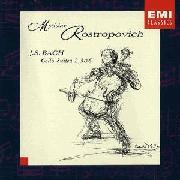 | Johann Sebastian Bach
Cello Suite No.2 in D minor, BWV 1008
1720
More aggressive than the first suite - the menuets feature some savage bowing techniques, and in some ways this suite is more attention-grabbing than the first. |
| 30 |  | Johann Sebastian Bach
Cello Suite No.3 in C major, BWV 1009
1720
A lively second movement and an emotive fourth highlight this very strong third suite of Bach's. |
| 31 |  | Johann Sebastian Bach
Cello Suite No.4 in E-flat major, BWV 1010
1720
Indeed, it's a bit direction-less compared to the other suites in this collection, but still enjoyable all the same. |
| 32 |  | Johann Sebastian Bach
Cello Suite No.5 in C minor, BWV 1011
1720
The very excellent, extended first movement makes everything else pale in comparison a bit here, although as ever, it's a very nice listen. |
| 33 | 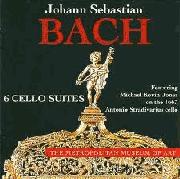 | Johann Sebastian Bach
Cello Suite No.6 in D major, BWV 1012
1720
Although interesting in the sense that it may have been composed for a smaller version of the cello, called a violoncello piccolo, this is a pretty inessential Bach piece and the weakest of the cello suites by a fair margin. |
| 34 | 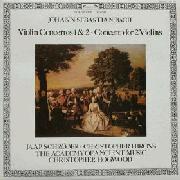 | Johann Sebastian Bach
Concerto for 2 Violins in D minor, BWV 1043
1720
Beautiful string work, probably as close to imitating the Italian style of string writing as Bach ever got. |
| 35 |  | Johann Sebastian Bach
Great Fantasia and Fugue in G minor, BWV 542
1720
More classic Bach organ writing, believed to have been inspired by a popular Dutch song and written/improvised for an audition. It serves as a reminder that for as complex and intricate as Bach's organ works could be, many of them were improvisations, which only adds to how far removed Bach's work was from those of his contemporaries. |
| 36 |  | Johann Sebastian Bach
Violin Sonata No.1 in G minor, BWV 1001
1720
The first (and perhaps most famous) of the sonata-partita collection that makes up BWV 1001-1006. |
| 37 | 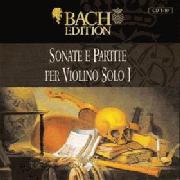 | Johann Sebastian Bach
Violin Partita No.1 in B minor, BWV 1002
1720
Some of Bach's trademark dissonance makes its way into this piece, a real tour de force for Herr Bach's violin writing. |
| 38 |  | Johann Sebastian Bach
Violin Sonata No.2 in A minor, BWV 1003
1720
The last movement is by some distance the most interesting thing here, although once again the entire piece is nice. |
| 39 |  | Johann Sebastian Bach
Violin Partita No.2 in D minor, BWV 1004
1720
The Chaconne is a masterwork in its own right, and it helps elevate this to be the absolute highlight of the collection. Stunning displays of virtuosity throughout. |
| 40 |  | Johann Sebastian Bach
Violin Sonata No.3 in C major, BWV 1005
1720
Not one of his standout violin works as a whole, but there's some cool dissonance at work in the first movement which is interesting. |
| 41 |  | Johann Sebastian Bach
Violin Partita No.3 in E major, BWV 1006
1720
Lively piece that closes out this collection nicely. |
| 42 | 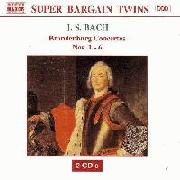 | Johann Sebastian Bach
Brandenburg Concerto No. 1 in F major, BWV 1046
1721
Originally intended as the introduction to a cantata, this is easily among the weakest of the Brandenburg concertos, if not the absolute weakest. This is still to say it's a very good listen, but the brightness doesn't quite *pop* as much here. |
| 43 | 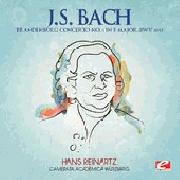 | Johann Sebastian Bach
Brandenburg Concerto No. 2 in F major, BWV 1047
1721
A trumpet part for the ages, going up to the instrument's highest register and reaching even further beyond that. While this sort of thing isn't quite a measure of musical *quality* per se, it speaks to its significance that the first movement not made it onto the Voyager Golden Record, but served as its opening track. As Baroque as it gets, and maybe the best moment in the whole collection. |
| 44 | 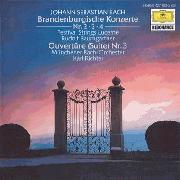 | Johann Sebastian Bach
Brandenburg Concerto No. 3 in G major, BWV 1048
1721
Superb string writing, the frenetic bowings in that final movement are what classical fans live for. |
| 45 | 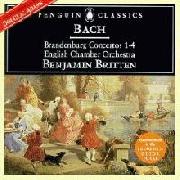 | Johann Sebastian Bach
Brandenburg Concerto No. 4 in G major, BWV 1049
1721
A very beautiful recorder solo in the second movement makes up for a slightly more by-the-numbers opener and closer. |
| 46 | 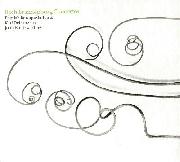 | Johann Sebastian Bach
Brandenburg Concerto No. 5 in D major, BWV 1050
1721
The other main standout of the Brandenburg works, as it's the most keyboard-focused of the lot and the harpsichord gets to shine in a properly obligato fashion here. |
| 47 |  | Johann Sebastian Bach
Brandenburg Concerto No. 6 in B♭ major, BWV 1051
1721
Ending the collection is perhaps the most "complete" concerto of the bunch, typifying the style more than the others which tend to let individual instruments shine through a bit more. |
| 48 | 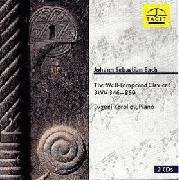 | Johann Sebastian Bach
The Well-Tempered Clavier I BWV 846-869
1722
What is one to say about this, the most influential collection of keyboard pieces ever written? Perhaps nothing more should be said, except that the best testament you could give is how it is equal parts an instructional work and a proving ground - even young Mozart and Beethoven were cutting their teeth on these pieces, and for as rudimentary as they may seem at times, how telling it is that they were so beloved as to stand the test of time and even be performed in concert centuries later. Book I has a stronger set of songs than the collection to come, certainly a product of how insanely productive Bach was at this stage of his career. |
| 49 | 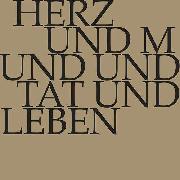 | Johann Sebastian Bach
Herz und Mund und Tat und Leben, BWV 147
1723
The source of Bach's most famous melody (transcribed in English as "Jesu, Joy of Man's Desiring" in 1926), this is a lively cantata written in 10 movements and originally based off an older Advent cantata. |
| 50 |  | Johann Sebastian Bach
Magnificat, BWV 243
1723
Bach takes a gander at magnificat-writing - whether he ever attempted it again is unclear, but what we have here is a diverse piece of music that explores much in the way of arrangement and instrumentation, a more dynamic piece compared to his other vocal and instrumental works from the period. |
| 51 |  | Johann Sebastian Bach
Johannespassion, BWV 245
7 April 1724
The earlier of Bach's two passion settings, this work exists in several different versions, and it is generally considered the more scattered, ill-structured of the two. But the emotions are arguably even more turbulently displayed: the sheer anger from the dissonant opening "Herr" syllables transitioning into the melancholy of the closing movements speaks to Bach's abilities as a text painter. |
| 52 |  | Johann Sebastian Bach
6 French Suites, BWV 812-817
1725
More excellent, inspired keyboard-writing during perhaps the most creatively fertile period of Bach's career - the fact that none of these suites stand among his very best or most-recognized works of the time is a testament to just how much of a roll he was on. |
| 53 | 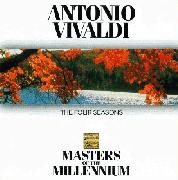 | Antonio Vivaldi
The Four Seasons
1725
Equal parts melodic, emotional, and virtuosic - this collection of concertos may not have been Vivaldi's most famous work in his life, but it certainly was what put him back on the map for listeners of the 20th century. Accompanied with texts that described individual scenes in the individual seasons, it's a (perhaps-disconnected, nevertheless-interesting) cool early example of program, narrative-driven music. This narrative inspires Vivaldi to pull out some of his most dynamic and harmonically-diverse pieces ever, which is what helps make it stand out from the other string pieces in his catalog. The opening movement of "Spring" is among the most universally-recognized classical melodies at this point, but it is best heard in-context, when it contrasts with the stormier parts of this collection. All in all, perhaps as close to a Bach-like compositional approach as the Italian redhead would ever reach. |
| 54 |  | Antonio Vivaldi
Il cimento dell'armonia e dell'inventione, Op.8
1725
The first four concertos are the highlights here (commonly recorded individually as "The Four Seasons" - you may have heard of them), but even the less famous material has a sense of dynamism even more prevalent than in any other Vivaldi collection. Fiery, passionate, and as prototypically baroque as you can get. |
| 55 |  | Antonio Vivaldi
Mandolin Concerto in C major, RV 425
1725
A bit of a trifle, but interesting in how it differs instrumentally (if not necessarily in spirit) from the rest of Vivaldi's work. |
| 56 | 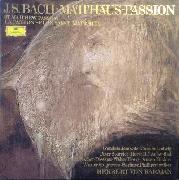 | Johann Sebastian Bach
Matthäus-Passion, BWV 244
11 April 1727
Many call this Bach's greatest work, and it's easy to see why. The piece is an even heavier listen than the St. John Passion, packing a potent emotional wallop despite being even more subdued. Most would say, and I'd agree, that the best way to experience this work is as a live, staged performance - in many senses, it is an opera by everything but name, yet it never feels overly dramatic in the way operatic works do. The drama feels genuine, as does the emotion. |
| 57 |  | Antonio Vivaldi
Six Flute Concertos, Op. 10
1728
A lot of these concertos feel taken straight out of the vernacular dances from the age - a lively and entertaining collection of pieces, indeed. |
| 58 | 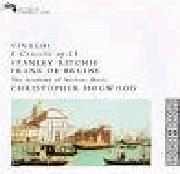 | Antonio Vivaldi
Six Concertos, Op. 11
1729
More of Vivaldi's consistently-interesting string output, this time around less melodically distinct and more texturally unique. |
| 59 |  | Johann Sebastian Bach
6 Partitas, BWV 825–830
1730
Workman-like pieces with a sense of thematic exploration about them, all six of them extremely lengthy for the time (averaging over 20 minutes apiece). |
| 60 | 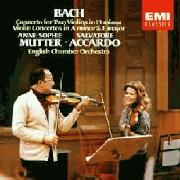 | Johann Sebastian Bach
Violin Concerto in A minor, BWV 1041
1730
A stellar first movement that's as good as anything Vivaldi did paired with a solid, but less remarkable final two movements. |
| 61 |  | Johann Sebastian Bach
Suite No. 3 in D major, BWV 1068
1731
The second movement (or "Air on a G String") clearly outclasses everything else here, taking time to slow down and focus on the beauty of the melody. Everything else is really good in its own right (sort of like a triple-meter Lully motet, in some ways), but there's a reason this piece is remembered for *the* one movement. |
| 62 |  | Giovanni Battista Pergolesi
La serva padrona
5 September 1733
Initially intended as intermezzo entertainment for a separate, serious opera of Pergolesi's, this little comedy work ended up becoming insanely popular in Italian theaters, remaining one of Pergolesi's most enduring and popular works. A great display of operatic ideas (specifically, the now-popular opera buffa) in miniature form. |
| 63 |  | George Frideric Handel
6 Grand Concertos, Op. 3 / HWV 312-317
1734
Nice music, although somewhat strangely assembled (and likely published without Handel's knowledge). As a mish-mash of Handel's concertos, it's quite nice. |
| 64 |  | Johann Sebastian Bach
Harpsichord Concerto No. 1, BWV 1052
1735
A contender for Bach's best harpsichord piece, with the first movement driving itself with a powerful melodic motive played jointly (and occasionally sequentially) by harpsichord and strings alike. The second movement is stately, and the third revises ideas from the first which ix mainly why I struggle to put this among the very upper echelon of Bach's works. A step below Bach's very greatest is many steps above most others', however. |
| 65 |  | Johann Sebastian Bach
Overture in the French style, BWV 831
1735
This and the Italian Concerto are considered companion pieces to the partita collections from the same timeframe - and indeed, they fit into that sound like a glove, despite being more drawn out and longer-form. |
| 66 | 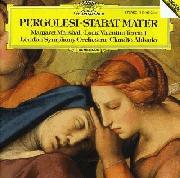 | Giovanni Battista Pergolesi
Stabat mater
1736
Pergolesi's epitaph, literally written on his deathbed. Not quite a reinvention of the wheel, and some have criticized the work for its overly dramatic flair, but the opening duet is very affecting. |
| 67 |  | Domenico Scarlatti
Essercizi per Gravicembalo K 1- K 30
1736
Scarlatti's version of the Well-Tempered Klavier - shorter pieces structured as technical exercises, but open to expressive possibilities. Prime material for any practicing keyboardist. |
| 68 |  | Antonio Vivaldi
Gloria, RV 589
1736
Solid late-career sacred work of Vivaldi's - sort of the last vestiges of a Baroque era that is starting to really fall by the wayside at this point. |
| 69 | 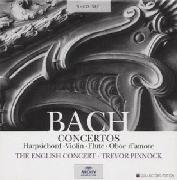 | Johann Sebastian Bach
Harpsichord Concerto No. 2 in E major, BWV 1053
1738
As with the first concerto in the sequence, the first movement here is a clear high point. |
| 70 |  | Johann Sebastian Bach
Harpsichord Concerto No. 3 in D major, BWV 1054
1738
Based off an extant violin concerto, this work is probably the second-best of the harpsichord concertos, again frontloaded with a terrific, dynamic first movement. |
| 71 | 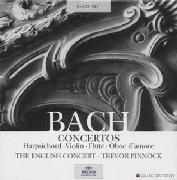 | Johann Sebastian Bach
Harpsichord Concerto No. 4 in A major, BWV 1055
1738
At times, the strings dominate the texture over the harpsichord, which is the greatest blemish on what is otherwise the most hierarchically balanced of the concertos to date, at least in terms of structure. |
| 72 |  | Johann Sebastian Bach
Harpsichord Concerto No. 5 in F minor, BWV 1056
1738
Easily the best slow movement of the lot, a proper harpsichord feature with the strings doing nothing but sparse, pizzicato plucks. Beautiful stuff. |
| 73 | 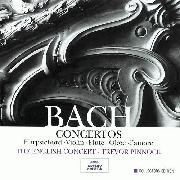 | Johann Sebastian Bach
Harpsichord Concerto No.6 in F major, BWV 1057
1738
A reworking of the 4th Brandenburg Concerto - Bach covering Bach is not the most inspired concept, and this is one of the weaker concertos in this collection (buoyed by the 4th Brandenburg being a very good work in its own right). |
| 74 |  | Johann Sebastian Bach
Concerto No.7 in G Minor, BMV 1058
1738
Another concerto where the emphasis is on the slow movement - not quite as strong a slow movement as the 5th, however. |
| 75 |  | George Frideric Handel
Saul, HWV 53
16 January 1739
An exceedingly dramatic oratorio, telling the life of King Saul through the eyes of the Biblical David. Handel's choral music has a ferocity to it unlike most of his other works, although as is common with Handel, the libretto is an English one rather than his native tongue. |
| 76 | 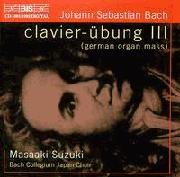 | Johann Sebastian Bach
Clavier-Übung III, BWV 669-689
1739
A bit of a plodder, collecting a bunch of good, rarely great organ works under a single banner. It is nice to hear Bach sound so reserved with this instrument, though, and some of the harmonic ideas are very nice indeed. |
| 77 |  | Giovanni Battista Sammartini
Symphony in F Major, J-C 32
c. 1740
A very primitive example of the symphony as a genre, very Baroque in its roots with a vibrant string melody in the first movement. |
| 78 |  | Antonio Vivaldi
6 Cello Sonatas
1740
Sort of a forgotten classic, containing some of Vivaldi's darkest works. Written one year before the composer's death, it certainly has a foreboding air to it at times. Recommended to those wishing for a different side of late-period Italian Baroque. |
| 79 |  | Johann Sebastian Bach
Goldberg Variations, BWV 988
1741
Who would have thought that a collection of keyboard exercises could be this entertaining and influential? Mostly known as a strange curio in the Bach oeuvre until the Glenn Gould recording from 1955 became hugely popular, this is actually a fairly demanding collection of pieces, demanding some serious hand independence skills and occasionally requiring hand-crossing that brings to mind the writing of Scarlatti. The entire work is very Italian in how it approaches phrasing, actually, showing both Bach's ear for trends as well as how much the Scarlattis and Vivaldis of the world were impacting the "scene", if you will. |
| 80 |  | George Frideric Handel
Messiah, HWV 56
13 April 1742
In retrospect, it would be hard for England's (German-imported) greatest composer of oratorios to botch this, an oratorio about the death and rebirth of Jesus. But as unsurprising as it is that this is great, it's worth acknowledging just *how* great it is - dramatic music that doesn't quite reach the darkness of Bach's Passions, for instance, but presents itself as full of life instead. The forthcoming resurrection is but a foregone conclusion here, which makes this story feel more complete than other takes. You get the resolution of the Christ story without having to sit in the dark stuff, and sometimes, particularly around a certain December holiday, that's what people are looking for. |
| 81 |  | Johann Sebastian Bach
The Well-Tempered Clavier II BWV 870-893
1742
All but inseparable from the first book, despite having been written at least 15 years later. The pieces in this book are somewhat less entrenched in the repertoire than those of the first, but they satisfy the same urges, achieve the same goals, and so on. |
| 82 |  | Johann Sebastian Bach
Triple Concerto in A minor BWV 1044
1744
Harpsichord, flute and violin combine for a very interesting concerto - the second movement especially plays with some interesting, sparser textures. |
| 83 | 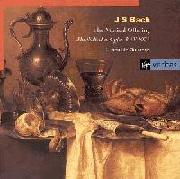 | Johann Sebastian Bach
The Musical Offering, BWV 1079
September 1747
This is Bach spreading his wings and letting loose a bit, showing off his chops at re-arranging and writing variations of a pedestrian melody (supposedly penned by Frederick the Great and handed to Bach himself). Bach's canons never sounded better than here, and he even lets loose with a cheeky trio sonata smack-dab in the middle, which fits in better than one would expect with the keyboard material all around it. |
| 84 |  | Carl Philipp Emanuel Bach
Keyboard Concerto In D Minor Wq. 23
1748
Potent, attacking the norms of the style galant with gusto and a proper fire underneath itself. Piano interpretations of this piece show off how the instrument's dynamics were utilized even in the early days of its existence. |
| 85 |  | George Frideric Handel
Music for the Royal Fireworks, HWV 351
27 April 1749
Written for George II as a tribute to yet another English war ending in success (as was the norm in those days), Handel's Fireworks is lumped in with his Water Music more often than not due to them both being outdoor performance pieces. Where the Fireworks stand out is in its usage of militaristic textures, such as a prominent snare drum and timpani - not necessarily a major compositional achievement for Handel, but most definitely a sign of things to come in Western music. |
| 86 | 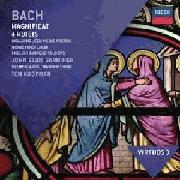 | Carl Philipp Emanuel Bach
Magnificat in D major, Wq.215
1749
Very inspired by his father's Magnificat, and potentially composed as an audition for his father's old job. CPE didn't carry on many of his father's attributes in his own music generally, so to hear an out-and-out homage like what this appears to be is kind of nice. |
| 87 |  | Johann Sebastian Bach
Mass in B minor, BWV 232
1749
If this isn't the pinnacle of Bach's artistic output, it's certainly up there and in fact might yet be the pinnacle of Baroque ideals. Lively and vibrant in places, powerful and somber in others, this work is the true culmination of an as-of-yet, and perhaps always-to-be, unparalleled career. Bach wrote other pieces before his passing, but none could be a more fitting epitaph than this grandiose masterwork, perhaps the definitive settings of the Mass Ordinary there has ever been. |
| 88 | 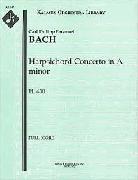 | Carl Philipp Emanuel Bach
Harpsichord Concerto in A minor, H.430
1750
Another great keyboard concerto that shows Bach's emotive tumult in action, magnified compared to his contemporaries'. |
| 89 |  | Johann Sebastian Bach
The Art of Fugue, BWV 1080
1751
No matter the type of ensemble, and rest assured many diverse ensemble types have attempted this work, the music of the Art of Fugue endures. This takes the ideas of Bach's other variation-based works and notches them up to 11, taking its standard theme and morphing it beyond recognition at points, yet still pairing it with fantastic contrapuntal ideas each time around. And it's impossible not to talk about Contrapunctus IV, the unfinished fugue that ends mid-phrase with no resolution - the last gasp of a composer whose light was ebbing out, but had much fire still within him. |
| 90 |  | Johann Stamitz
Sinfonia a 8 in E-flat, Op. 11, No. 3
c. 1755
The second movement's lengthy runtime grabs your attention at first, but the true star is the first movement, with its stormy crescendos that have since been dubbed "Mannheim steamrollers", after the Mannheim school of compositional thought that Stamitz is said to have founded. Indeed, this is already a fantastic improvement on Sammartini's embryonic symphony structure - the addition of a fourth movement helps with that sense of development significantly. |
| 91 | 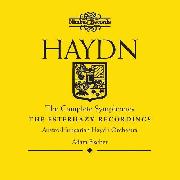 | Joseph Haydn
Symphony No.6 in D major "Le Matin"
1761
Virtuosic in a way that most symphonies of the day weren't - in particular, the flutes have some adept staccato solos that require a great deal of technical ability to pull off properly. |
| 92 | 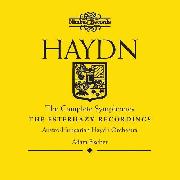 | Joseph Haydn
Symphony No.7 in D major "Le Midi"
1761
The anthemic opening is a fine start, but the second movement, a grandiose thing in itself, is the main attraction here. |
| 93 | 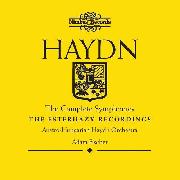 | Joseph Haydn
Symphony No.8 in D major "Le Soir"
1761
Mostly unremarkable apart from the last movement, straight out of the Mannheim school with its fast runs and turbulent dynamics. The slower sections are meant to represent rainfall, the faster ones presumably to portray a storm. |
| 94 |  | Christoph Willibald Gluck
Orfeo ed Euridice
5 October 1762
Gluck's most famous work, an heir to the tradition of French opera that ended up setting the stage for the German opera of the coming decades. The pastoral dances are some of the liveliest jaunts you'll hear from the era, and the castrati parts are quite difficult and intense in their own regard. Also on the shorter side for operas of the day, which helps its digestibility. |
| 95 | 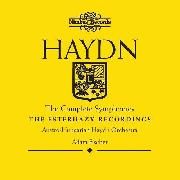 | Joseph Haydn
Symphony No.22 in E-flat major "The Philosopher"
1764
A magisterial first movement is the true calling card of this symphony, which otherwise features a lot of flashy playing and faster tempos. |
| 96 | 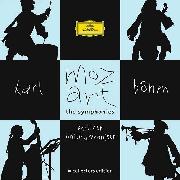 | Wolfgang Amadeus Mozart
Symphony No.1 in E♭ major, K.16
1764
Not bad as symphonies penned by 8-year-olds go. Actually quite a good first movement even if the melody is rudimentary. |
| 97 |  | Carl Philipp Emanuel Bach
Sonata in A, W.55 No. 4
1765
The dynamics in this piece are strikingly outside of their time, so much so that you could believe Mr. Bach's first name was Ludwig if you weren't paying enough attention. |
| 98 | 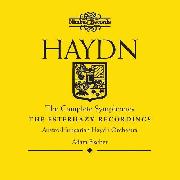 | Joseph Haydn
Symphony No.30 in C major "Alleluia"
1765
Simplistic melodies, centered around the "Alleluia" motif taken straight out of Roman chant. |
| 99 | 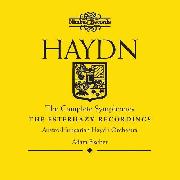 | Joseph Haydn
Symphony No.31 in D major "Hornsignal"
1765
A horn feature, as the name implies, with themes related to hunting calls sprinkled across each movement. |
| 100 | 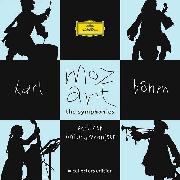 | Wolfgang Amadeus Mozart
Symphony No.4 in D major, K.19
1765
Technically his second symphony (#2 and #3 being authored by different people entirely; adults, no less), ND a mite more interesting overall than his first. |
|
